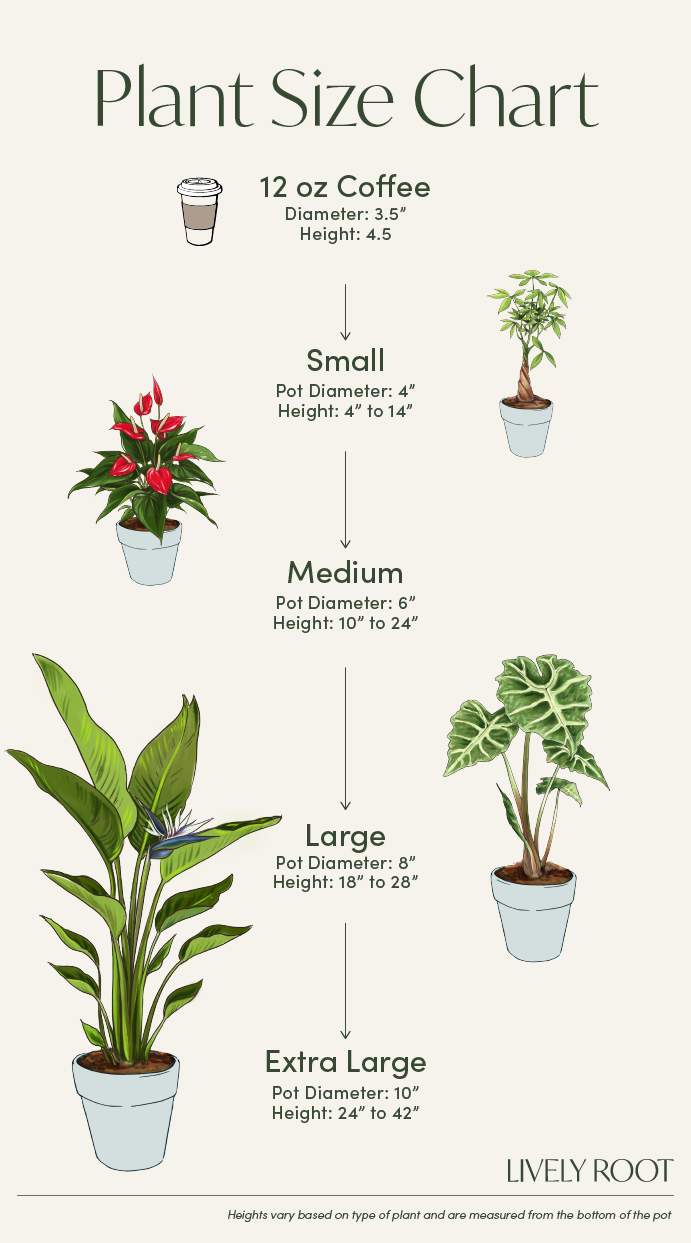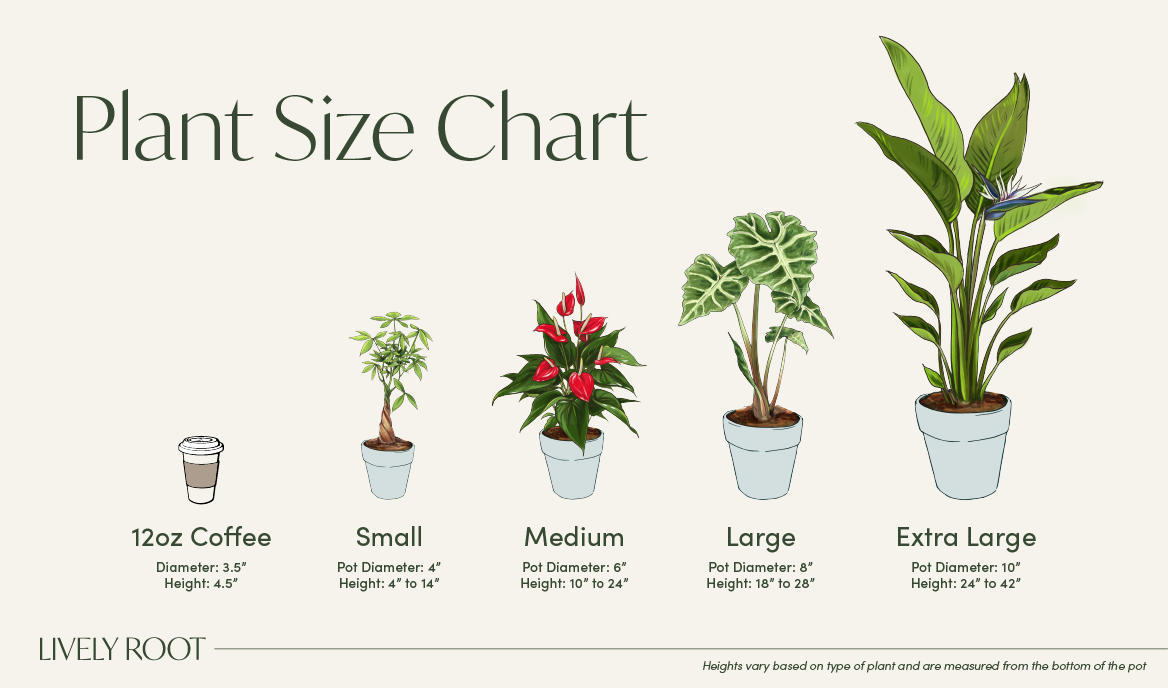

Coconut Tree Care Guide & Presentation

Medium to bright indirect light.
Keep the soil moist consistently (but not soggy).
Give this palm a spritz daily!
This plant loves heat and humidity so the warmer the better. Keep away from heating vents or direct sunlight though as the leaves could burn.
Outdoors in full sun, where nights are above 40°F.
Indoor: Feed monthly in the spring and summer months and reduce to once or twice during the fall and winter months. :: Outdoor: Apply fertilizer around the drip line of the plant and follow manufacturer's directions for use. Apply in three times a year in the spring, summer and fall.
Repotting detail
Use an indoor container mix that is well-draining with good aeration. You may add peat moss to the soil to keep them light.
Add soil to the bottom to elevate the root clump.
Lift the plant and inspect the root clump. Notice if there are any dead or rotting roots and trim off with sterile pruners. If the plant is rootbound, cut through the roots to alleviate continued encircling.
Ensure the plant is sitting about 1" below the edge of the pot to avoid water spillage. Add more soil and backfill around the sides by tamping down. Do not cover the current level of soil on the plant but add soil up to this level.
Water thoroughly, leaving the soil damp but not soggy. Add more soil after watering if the soil settles.
After transplanting, the Cat Palm may experience some transplant shock after the process. Allow the palm to rest during this time in a partial shady area if outdoors or bright, indirect light when indoors.
Keep them well-watered and add humidity around them as they are getting established.
Outdoors:
Before planting or repotting in a container, water the plant in the grower pot well and let drain.
Find a spot in the garden where there are at least 4-6 hours of direct sunlight each day.
Be generous by digging a hole twice the pot's width and 1 inch shorter than the grower pot to raise them above the soil level for good drainage.
Use a pitchfork or a sharp object to stab the soil walls to make several indentions for the roots to take hold.
Tickle the roots to loosen them if they wrap inside the container. Place the plant in the center of the hole. Fill the hole with water first, so the roots get another good drink.
Next, backfill with native soil mixed with compost by one third to one half (if the native soil is clay).
Add a rooting hormone fertilizer to this backfill mixture.
Tamp the soil firmly down around the edges and mound up. Avoid covering the original soil level of the plant that was in the container.
Add mulch as needed but not next to the stem or branches of the plant. Water and keep consistently moist but not soggy. Continue to observe the soil moisture each day, depending on the temperatures and soil drainage.
Keep yellowing or browning fronds cut off. If tips get burned, trim off the edges at an angle so they looks more natural. Keep the soil clean and replenish with soil if depleted.
This coconut palm, if in it's ideal conditions and allowed to fully grow, will produce coconut seeds that can be planted.
Coconut Tree: Overview
The Coconut Palm (Cocos nucifera) is a large plant with graceful, slender leaves. It can grow indoors, provided you have plenty of vertical space, or outdoors in hardiness zones 4-12. This large plant grows straight from its coconut seed and can reach up to 80 ft. in height in the wild.
The Coconut tree is a tropical plant native to Southeast Asian islands like Indonesia and Malaysia. It belongs to the palm family (Arecaceae). Like many palms, it has a lifespan of around 80 years, and it can take up to 10 years for this plant to mature and start bearing fruit. Potted Coconut trees, however, are unlikely to produce fruit.
The ideal growing conditions for this gorgeous and undemanding indoor palm include a lot of sunshine and high humidity.
Coconut palm trees are a symbol of well-being and success in Hindu culture. They are called the “tree of life,” highlighting that their parts can be used for food, shelter, or other life-supporting needs. This palm is safe for pets as it contains no toxic substances that can harm animals.
Cocos Nucifera: Alternative Names
- Coconut Tree
- Cocos indica (Royle)
- Tree of Life
- Kelapa
Coconut Palm Tree: Benefits
- Great air-purifying plant
- A non-toxic and pet-friendly palm
- Adds a relaxing tropical vibe to any interior space
- It’s a symbol of abundance and well-being in Asian cultures
Coconut Palm Tree: Care Guide
Coconut palm tree care isn’t difficult as long as you can provide sufficient light, water, and humidity to recreate its native tropical environment for your plant. Here are some tips that will help you keep your Coconut tree happy and flourishing:
Watering and Humidity
Cocos nucifera requires consistent and regular watering. Keep the soil moist but not soggy. This tropical palm loves high humidity, so you can mist your plant daily.
Light and Temperature
The Coconut plant needs at least 6-8 hours of bright, indirect sunlight daily. Direct sunlight may cause leaf burn. This palm prefers warm temperatures(65°F-100°F). If you’re growing your Coconut on the porch, take it indoors when the night temperatures fall below 40°F.
Soil, Fertilizing, and Repotting
Plant your Coconut Palm in a well-draining potting mix. You can mix in some peat moss for better root aeration. Repot in spring or when the roots start growing from the drainage holes. Use a pott 2 inches bigger than the previous one. Give your plant some fertilizer monthly during the growing season, and feed once or twice during fall and winter.
Propagation
If your palm produces seeds (coconuts), you can try to propagate the plant. Soak your coconut in water for a few days, bury the lower third of the nut in moist soil, and watch it sprout new shoots.
Pruning and Cleaning
You don’t need to shape and prune your Coconut palm. Remove any browning or wilting leaves and ensure the soil around your palm is debris-free. You can add mulch over the soil if you’ve repotted your Coconut tree in the garden.
Common Issues
Watch out for signs of overwatering, like yellowing leaves and root rot. Browning leaves can indicate insufficient humidity or underwatering. Dry spells of weather can occasionally lead to spider mites on your palm. Remove them with a damp cloth and increase the humidity around your plant.
Coconut Palm Tree: Placement, Companion & Alternative Plants
You can grow your Coconut tree indoors or put it on your porch where it will add a tropical feel to your outdoor living space.
Best Locations & Uses
- Wonderful palm tree, suitable for people with pets
- Ideal for beginner indoor gardeners
- Perfect bedroom plant with air-purifying and mood-balancing properties
- Amazing statement plant for large spaces
- Great porch plant that can boost your property’s curb appeal
Companion Plants
Your gorgeous Cocos nucifera tree loves sunlight and humidity, and grouping it with other indoor plants can help keep humidity levels high.
- Dwarf Cavendish Banana Tree (Musa acuminata): Another gorgeous houseplant that produces edible fruit, the Dwarf Cavendish Banana Tree grows lovely broad leaves and loves warmth and humidity.
- Dieffenbachia Camouflage (Dieffenbachia 'Camouflage'): A gorgeous Dieffenbachia variety, the variegated, chartreuse leaves of the Dieffenbachia Camouflage will create a stunning contrasting effect when combined with the darker green foliage of other plants.
- Aphelandra Zebra Plant (Aphelandra squarrosa): Boasting vivid, striped leaves and gorgeous yellow blooms, the moisture-loving Aphelandra Zebra Plant is refreshingly unusual and exotic.
Alternative Plants
If you’re looking for an attractive plant for your home or office, consider these amazing easy-care plants that will improve air quality and add visual appeal:
- Hawaiian Sunshine Dragon Tree (Dracaena warneckii "Hawaiian Sunshine"): Known for its air-purifying qualities, the delightful Hawaiian Sunshine Dragon Tree is a low-maintenance plant, perfect for beginners.
- Cat Palm (Chamaedorea cataractarum): Another easy-care and pet-friendly palm, the Cat Palm’s airy foliage looks elegant and nostalgic.
- Aloe Vera Plant (Aloe barbadensis): One of the most resilient and sought-after succulents, the easy-care Aloe Vera Plant is famous for its air-filtering and medicinal properties.
Make a Statement With a Coconut Tree From LivelyRoot!
Treat yourself to one of Lively Root’s stunning Coconut palm trees for sale, or get one as a memorable gift for someone special!




































